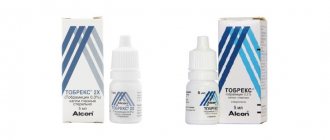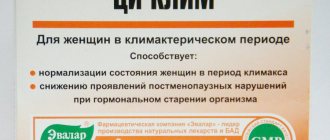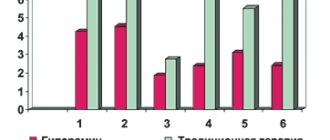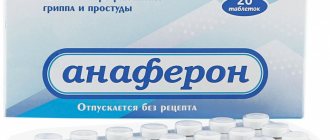Average reading time: 10 minutes
Publication date: October 18, 2021
Zakharova Carolina Yurievna
Physician and author of scientific articles on therapy, ophthalmology, pediatrics and psychiatry
Almost any person, even with “good” health, has at least once encountered annoying symptoms: cough, sore throat, runny nose. This is not surprising, because ARVI (acute respiratory viral infections) are very common. Despite the fairly mild course of some colds, you should not take them lightly: like any infection, ARVI can cause very unpleasant complications1.
SARS is a group of viral diseases of the respiratory tract often called the common cold 1 . Currently, there are more than 200 viruses that cause acute respiratory infections 2 . The most significant are influenza viruses, rhinovirus, adnovirus, respiratory syncytial virus, parainfluenza viruses 2 .
In Russia, about 30 million cases3 of ARVI are registered annually, with adults getting sick on average 2-4 times a year4.
What to do if symptoms of illness occur? How long can the illness last? Why shouldn’t you treat yourself and which doctor should you contact? The answers are in our article.
Up to contents
How can an adult become infected with ARVI?
Respiratory viruses do not always cause illness. For the development of an infectious disease, three conditions are necessary - contact with a patient, transmission of the virus from him and the failure of local immunity, which does not have time to cope with the virus. The source of infection can be either a patient (with obvious or subtle manifestations of the disease) or a healthy person - a virus carrier1.
There are several ways of transmitting ARVI, but 2 of them are the most common2.
- Airborne
- when viral particles are inhaled. The latter enter the air when an infected person sneezes or coughs, and can spread to a distance of 7-8 meters from the patient5. By forming an aerosol cloud in the air, viruses are able to survive for several hours and move along with the air flow that comes from an air conditioner or fan5. - Contact-household
- the pathogen is “carried” by hands from contaminated surfaces. For example, the influenza virus persists in indoor air for 2-9 hours, settling on various objects. Thus, on paper, cardboard and fabrics it remains viable for 8-12 hours, on metal objects and plastic - 24-48 hours, on glass surfaces - up to 10 days6.
The pathogen enters the body through the entrance gate. For ARVI, this is the upper respiratory tract1. But even the entry of viruses into the body does not mean that inflammation is inevitable. The disease occurs when local immunity is ineffective1,7. Only when this barrier is passed, the viruses that enter the mucous membrane of the respiratory tract populate it, and then penetrate the cells and cause typical cold symptoms6. After activation of immune cells, antibodies begin to be produced, the virus is destroyed and eliminated from the body, and immunity is formed1.
Up to contents
What is ARVI?
ARVI is a group of diseases caused by DNA and RNA viruses, of which there are more than three hundred. Acute respiratory viral infection is a group name for all infections that are united based on the similarity of symptoms, as well as based on the similarity of transmission routes of infectious agents (airborne droplets predominate). Diseases are easily transmitted at any age, outbreaks are observed all year round, but the most dangerous period is autumn-winter. The most common provocateurs of acute respiratory infections are influenza viruses, parainfluenza, rhinoviruses, adenoviruses, coronaviruses, bocaviruses, respiratory syncytial virus (RSV), and less commonly, bacteria and atypical pathogens such as chlamydia, mycoplasma, and legionella. Having penetrated the epithelial cells, most often the nasal mucosa, the viruses begin to multiply and, as a result, destroy them.
We can say that ARVI is caused by viruses of various genera and families:
- rhinoviruses and reoviruses (more than a hundred);
- three types of influenza (A-C);
- parainfluenza (4 types);
- adenoviruses (more than forty);
- RSV (2 serotypes);
- enteroviruses such as Coxsackie, ECHO and others
Symptoms of ARVI in adults
The disease usually begins acutely with an increase in body temperature. The patient is bothered by a cough, runny nose and sore throat1. These cold symptoms may vary depending on the pathogen.
Thus, influenza is characterized by high fever with a temperature rise of up to 38°C8, and in severe cases – even higher5. Severe headache, weakness, cough, muscle and joint pain, increased sensitivity to sharp sounds, smells and light6 come to the fore, while runny nose and nasal congestion are less common2.
For ARVI in adults, the doctor can make different diagnoses, depending on the level of damage to the respiratory tract1:
- Rhinitis
occurs when the nasal cavity becomes inflamed. The disease is manifested by copious nasal discharge, sneezing and difficulty breathing through the nose. A cough is possible if mucus forms in excessive quantities and flows down the wall of the pharynx, irritating the cough receptors. - Pharyngitis
develops when a pathogen attacks the mucous membrane of the pharynx, causing a dry, sore throat and painful swallowing. - Tonsillitis
is the main cause of sore throat associated with inflammation of the tonsils. - Laryngitis
occurs when the larynx and vocal cords become infected. Laryngitis causes a barking, rough cough and hoarseness. - Tracheitis
, or damage to the trachea, is manifested by rawness in the chest and a dry cough. - Bronchitis
is an inflammatory process in the bronchi, in which a person is bothered by a cough. Unlike tracheitis, cough with bronchitis is usually accompanied by sputum production.
Up to contents
ARVI, ARI, ORZ. What is it, how is it different and what is important to know?
Feeling unwell, fever and sore throat, many people go to the clinic. And to the question: “What do I have, doctor?” – they may hear the answer: ARVI, ARI or ARI. Many people wonder: is this the same diagnosis? After all, the symptoms of the disease are, in most cases, the same. Then why does the doctor prescribe antiviral drugs in one case, antibiotics in the second, and a regular throat treatment in the third? And what can you take in all these cases to reduce the incidence of colds? Let's figure it out together.
What are acute respiratory viral infections, acute respiratory infections and acute respiratory infections?
ARI (acute respiratory disease) is a condition caused by an infectious-inflammatory process in the respiratory tract that occurs for a variety of reasons. The most common are hypothermia, allergies, infection and decreased immunity due to stress, lack of vitamins, untreated chronic diseases and adverse environmental factors. Various acute respiratory infections have similar development mechanisms and many common symptoms. According to localization, acute respiratory infections are usually divided into diseases of the upper and lower respiratory tract. It is important to note that the diagnosis of “ARD” is often made when the exact nature of the respiratory system disease is not known in a person.
Infectious diseases of the upper respiratory tract include rhinitis, nasopharyngitis, pharyngitis, rhinosinusitis and sinusitis, tonsillitis, otitis media, epiglottitis. Tracheitis, bronchitis and pneumonia are diseases of the lower respiratory tract. Laryngitis occupies an intermediate position. All of these diseases can be caused by viruses, bacteria, fungi and parasites. Therefore, they are combined under the general term “ARI”, or “acute respiratory infection”.
Well, the name “ARVI”, or “acute respiratory viral infection”, speaks for itself. It means that the cause of the disease is viruses, and only viruses. Based on the totality of symptoms, an experienced specialist can distinguish not only the nature of the disease, but also the suspected pathogen. Laboratory diagnostic methods further clarify the picture. Hence the “different” diagnoses with seemingly similar symptoms. It should be noted that most often the cause (90% of cases) of inflammation in the respiratory tract is still an infection.
When are you more likely to catch a cold?
Every year, with the arrival of changeable autumn and cold winter weather, we are attacked by more than 200 types of viruses: coronaviruses, adenoviruses, influenza viruses, parainfluenza, etc. With reduced immunity, each virus can become a “conductor” of a bacterial infection. A noticeable surge in colds is also observed in the spring. Why is this happening?
The maximum prevalence of ARI in the autumn-spring, as well as winter months, is most often associated with hypothermia, which contributes to the development of these diseases. High-risk groups include children, the elderly, pregnant women, and people with chronic heart and lung diseases.
The source of infection is the sick person. Transmission of infection occurs through airborne droplets, as well as through contaminated hands or objects containing pathogens of respiratory infections. Therefore, if one person in a team or family has caught a cold, the rest should also take care.
Why does my throat often hurt when I have a cold?
This symptom most often appears due to damage to the mucous membrane of the oropharynx by various viruses and bacteria. It is the mucous membrane of the respiratory tract and throat that is the “entry gate” for pathogenic agents. Under the influence of viruses and bacteria, the mucous membrane of the nasal cavity is damaged and a large amount of mucus is released, which flows from the nasal cavity down the back wall of the pharynx and causes coughing, developing and maintaining local inflammation. The mucous membrane of the throat swells, turns red, and becomes painful. A sore throat also occurs due to inflammation of the mucous membrane of the pharynx and its drying out with difficulty in nasal breathing and breathing through the mouth. Therefore, complaints about a sore throat should be taken seriously and the disease should not be left to chance.
Currently, in treatment programs for acute respiratory infections, accompanied by pain and sore throat, much attention is paid to pharmaceutical herbal remedies developed on the basis of modern technologies. A good choice is Tonzilgon® N (manufactured by Bionorica, Germany). Tonsilgon N is a combined preparation of plant origin, which includes: extracts of chamomile, marshmallow, horsetail, oak bark, dandelion, yarrow and walnut leaves. Together, these herbs have immunomodulatory, anti-inflammatory and antiseptic effects. The use of the drug is also possible as an addition to therapy with antiviral or antibacterial agents.
The role of herbal medicine Tonsilgon N in acute respiratory infections
Children and adolescents suffer from acute respiratory infections 4-5 times more often than adults. This is explained by age-related imperfections of immunity and the peculiarities of the anatomy and physiology of the child. According to many medical specialists, the unstable functioning of the immune system, which is typical for children and adolescents, can be leveled out with the help of a course of taking specially developed herbal medicines. Tonsilgon N is one of these drugs. Considering that Tonsilgon N acts as an immunocorrector on the one hand and an antiseptic on the other, it is very effective in the treatment of acute and exacerbation of chronic diseases of the upper respiratory tract. It reduces the severity of acute respiratory infections and the frequency of exacerbations of chronic tonsillopharyngitis.
Considering all the properties of the drug Tonzilgon N, it can be recommended both as an independent treatment of respiratory diseases of the upper respiratory tract, acute tonsillopharyngitis, exacerbation of chronic tonsillitis and pharyngitis in children and adults, and as part of complex therapy. Its therapeutic and preventive effect on the mucous membrane of the throat can be useful in preventing complications of acute viral infections, especially in the difficult conditions of the COVID-19 pandemic.
What is important to know about Tonsilgon N?
Tonsilgon H provides a complex effect on the mucous membrane of the upper respiratory tract. Thanks to its balanced herbal composition, it is well tolerated. Tonsilgon N is used in the treatment of acute respiratory infections, accompanied by a sore and sore throat, difficulty swallowing, and cough. The drug is convenient to use. It is available in two dosage forms: as an aqueous-alcoholic extract (drops for oral administration) and film-coated tablets. Tonsilgon N in drops is indicated for children from 2 years old, and in tablets - from 6 years old. Both forms of the drug can be taken by adults. It is important that the alcohol content in the solution ranges from 16 to 19.5% vol. (one drop of the drug contains approximately 0.008 g of pure ethyl alcohol), which is not significant in terms of the child’s body weight and does not exceed the alcohol content in one package kefir Therefore, from this point of view, the drug is safe for children. Tonsilgon N is the No. 1 drug prescribed by pediatricians among all products. It is among the TOP 10 best-selling herbal preparations in Russia. Tonsilgon N has been successfully used for more than 50 years in Germany, 20 years in Russia and 18 years in Belarus.
How to take Tonsilgon N?
The use of Tonsilgon N reduces the likelihood of complications of acute respiratory infections and the development of recurrent colds. The drug has also proven itself in the treatment of complicated ARVI. Tonsilgon N plays an important role in the treatment of frequently ill children attending preschool and school institutions. Its use is very important in the autumn-spring period, when the risk of colds increases. Dosage regimen:
| Form of the drug | How to take for children | How to take for adults |
| Drops Contraindicated for children under 2 years of age! |
|
|
| Pills Contraindicated for children under 6 years of age! |
|
|
Tonsilgon N is an excellent remedy for sore throat and sore throat, which also helps prevent complications from acute respiratory infections. Take it so you don't get sick!
Literature:
1. O. I. Pikuza, E. V. Generalova, I. I. Zakirov. Herbal medicine in the rehabilitation of adolescents with recurrent respiratory diseases. "Medical Almanac" No. 3, 2008
2. ARVI in children during a difficult epidemiological situation. Interview with Professor of the Department of Otorhinolaryngology of the Medical Institute of RUDN University, Head of the Otorhinolaryngology Center “On-Clinic”, Doctor of Medical Sciences, Irina Mikhailovna Kirichenko. "Medical Council" No. 18, 2020
3. S. O. Klyuchnikov, O. V. Zaitseva, I. M. Osmanov, A. I. Krapivkin, E. S. Keshishyan, O. V. Blinova, O. V. Bystrova. Acute respiratory diseases in children. A manual for doctors. "Russian Bulletin of Perinatology and Pediatrics", Appendix No. 3, 2008
4. A. S. Milakova, V. V. Trubnikov. Scientific supervisor – Doctor of Medical Sciences V.S. Ledneva, Ph.D. E.D. Chertok. Choice of therapy for acute respiratory diseases in children on an outpatient basis. “Russian pediatric journal” (Russian journal) No. 22(5), 2019
5. Acute respiratory infections and influenza. Prevention.
6. O. A. Malyavko. ORI. What it is?
7. Instructions for medical use of Tonsilgon N for specialists
How does ARVI progress in an adult by day?
Symptoms do not appear immediately after the virus enters the body. The period from the moment of infection to the appearance of the first signs of the disease is called incubation. Its duration varies depending on the pathogen of ARVI. Thus, for the parainfluenza virus it does not exceed 4 days, and for adenoviral infection it can last up to 14 days1.
The acute period of a cold, when the symptoms are most pronounced, usually lasts 3-4 days2. Recovery time in adults in most cases does not exceed 6-7 days4.
Who is at risk of getting infected?
At risk are people with an incompetent immune system6 and concomitant diseases. ARVI risk groups include6,9:
- pregnant and postpartum women6;
- people with chronic diseases of the respiratory and cardiovascular systems6;
- persons suffering from obesity5 or diabetes mellitus9;
- elderly6.
Up to contents
Diagnosis of ARVI in adults
In most cases, complex tests are not necessary to confirm the diagnosis. But to find out which pathogen caused the infection, the doctor may prescribe a series of tests1.
In order to determine the nature of the inflammation, a clinical blood test is performed; to clarify the pathogen, PCR (polymerase chain reaction) or ELISA (enzyme-linked immunosorbent assay)1 is performed. X-rays are indicated if complications are suspected, such as pneumonia or sinusitis (inflammation of the paranasal sinuses)1.
In the presence of concomitant chronic diseases, additional research methods or specialist consultations may be required1.
Up to contents
Differential diagnosis: how to distinguish acute respiratory infections from acute respiratory viral infections?
Although laboratory tests are necessary to confirm the diagnosis, in practice, an experienced physician is highly likely to be able to distinguish acute respiratory disease caused by bacteria from acute respiratory viral disease. Although the symptoms are very similar, there are still small nuances.
A general blood test with a detailed leukocyte formula usually allows you to confirm the doctor’s guess. Viral infections are much more likely than bacterial diseases to become causes of epidemics for the simple reason that viruses spread more easily by airborne droplets and are easier to become infected with. Therefore, if there are many patients with the same symptoms, doctors are inclined to believe that the cause of the disease is acute respiratory viral infections.
There are about 300 microorganisms known in the world that, when they enter the human body, cause symptoms of acute respiratory diseases or infections. Among them are influenza viruses, adenoviruses, rhinoviruses, mycoplasmas, chlamydia, streptococci, pneumococci and staphylococci. Some of the most well-known acute respiratory viral infections are influenza viruses A, B and C.
How and how to treat ARVI and influenza in adults?
Regardless of the severity of the disease, all patients are recommended1:
- bed rest;
- easily digestible food;
- drinking plenty of fluids.
If you have a cold, you should try to drink more fluids throughout the day. You can drink weakly brewed tea with milk, honey, jam, as well as rosehip decoction, freshly prepared fruit and berry juices, compotes, alkaline mineral waters 1.
At the same time, it is important to remember what not to do during ARVI. You should not drink alcohol1, intense physical activity1 is unacceptable, and you should also not ignore the doctor’s recommendations and self-medicate1.
Only a doctor can decide what adults should take and what regimen they should take. And timely initiation of therapy significantly improves the prognosis10.
For ARVI in adults, the doctor may prescribe the following groups of drugs:
- Antiviral drugs
are most effective when prescribed in the first 2 days of acute respiratory viral infections, including influenza9. - Antipyretics
- taken when body temperature rises above 38.5 ° C or severe discomfort (headache, muscle-joint pain, impaired consciousness)1. - Vasoconstrictor drops and sprays
- recommended for use for a runny nose for no longer than 5 days1. - Means for relieving sore throat
- local anesthetics in the form of spray, lozenges, lozenges1.
If necessary, the doctor may additionally prescribe mucolytics, antitussives and bronchodilators. The need for antibacterial therapy can only be assessed by a specialist1.
Antibiotics are not used for influenza; the doctor prescribes them when he assumes that the causative agent is not a virus, but a bacterium, or in case of bacterial complications.1.
Anaferon®9, a domestic drug used to treat ARVI for more than 15 years, has antiviral activity against respiratory viruses, including influenza viruses. The active ingredient of lozenges is technologically processed antibodies to gamma interferon11.
The use of the drug as part of complex therapy helps reduce the duration of the main symptoms of the disease by more than a third compared to placebo12. Studies show that more than half of patients with a confirmed diagnosis of ARVI during treatment with Anaferon® recover on the 4th day, which is 2 times more compared to placebo therapy12.
For ARVI, the drug acts as follows11:
- reduces the concentration of viral particles in tissues;
- stimulates the production of interferons (the body’s own proteins that limit the spread of viruses);
- activates all parts of the immune system;
- enhances the production of antibodies (secretory IgA).
The favorable safety profile allows the use of Anaferon® by elderly people and people with concomitant diseases. According to clinical studies, the drug is well tolerated, and there are no cases of drug incompatibility11.
Up to contents
Flu
Influenza also belongs to the group of acute respiratory viral infections, however, due to the tendency of influenza to spread with the development of epidemics, it is isolated separately. In addition, influenza is accompanied by more pronounced clinical manifestations and has a higher risk of complications. There is a subtype of the H5N1 influenza virus that is transmitted from sick birds (ducks, chickens) to humans (“bird” flu) or pigs (“swine” flu).
Influenza is characterized by an acute onset with a rise in temperature to 38–40 °C, accompanied by pain and aches in the muscles, headache, chills, weakness, general weakness, and poor appetite. Then comes pain and sore throat, dry cough. A runny nose is not typical for influenza, which distinguishes it from other acute respiratory viral infections (“dry catarrh”). Body temperature returns to normal on days 3–5 of illness.
Complications of influenza, in addition to pneumonia, include inflammation of the paranasal sinuses, middle ear (especially in children), respiratory distress syndrome (pulmonary edema), and meningitis. The flu is most dangerous for young children, the elderly, as well as for patients with HIV infection, diabetes mellitus and people with weakened immune systems.
With acute respiratory viral infections and influenza, you need to be careful if your body temperature rises again and your health deteriorates - this indicates the development of complications or the presence of another disease. “Alarming signs”, if they appear, you should definitely consult a doctor:
Maintaining an elevated body temperature (more than 37.5 °C) for more than 7 days, as well as its repeated increase;
- increased headache;
- vomit;
- drowsiness or confusion;
- stiff neck (inability to bend your head so that your chin touches your chest);
- shortness of breath (difficulty breathing);
- chest pain;
- bloody sputum;
- any rash on the skin;
- intolerance to bright light.
The diagnosis of ARVI and/or influenza is most often beyond doubt and is based on a characteristic clinical picture. To identify complications of ARVI, a general blood and urine test, x-ray of the chest or paranasal sinuses, and sometimes bacteriological analysis of sputum may be required.
1 Laboratory diagnostics in MedicCity
2 Laboratory diagnostics in MedicCity
3 Laboratory diagnostics in MedicCity
Treatment of influenza and ARVI
- Follow home regime. If there is someone else in the apartment besides you, wear a medical mask, which you change every 2 hours.
- Drink more warm fluids (up to 2 liters per day) - this will avoid dehydration in conditions of high body temperature and improve the removal of toxins from the body.
- If your body temperature rises above 38.5 °C, or if you cannot tolerate high fever, take antipyretics (paracetamol, acetylsalicylic acid). Remember that acetylsalicylic acid (aspirin) is strictly contraindicated for children under 16 years of age!!!
- To relieve the symptoms of ARVI, you can use complex preparations containing, in addition to antipyretics, antitussive, antiallergic components, as well as vitamins. Read the instructions for use carefully!
- To relieve cough, you can take all kinds of herbal infusions or expectorants, but these drugs do not affect the duration of the disease.
- To influence pathogens, interferons (the main factor of antiviral defense in the body) and stimulators of interferon formation are used; oseltamivir or zanamivir (effective only for influenza); anti-influenza immunoglobulin is administered to weakened people, as well as to patients with severe forms of influenza. Before taking these medications, consult your doctor!
- Antibiotics are not used to treat uncomplicated forms of ARVI and influenza because they do not affect viruses.









